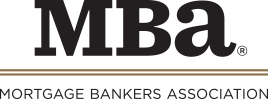
Inventory Woes Continue to Crimp Existing Home Sales
July existing home sales, hampered by dwindling inventories slumped for the second straight month, the National Association of Realtors reported yesterday.
NAR said total existing-home sales fell by 1.3 percent to a seasonally adjusted annual rate of 5.44 million in July from a downwardly revised 5.51 million in June. While July sales improved by 2.1 percent above a year ago, it represented the worst monthly performance of 2017.
Single-family home sales decreased by 0.8 percent to a seasonally adjusted annual rate of 4.84 million in July from 4.88 million in June, but came in 1.7 percent higher than the 4.76 million pace a year ago. The median existing single-family home price rose to $260,600 in July, up 6.3 percent from July 2016. Existing condominium and co-op sales fell by 4.8 percent to 600,000 units in July, but were 5.3 percent higher than a year ago. The median existing condo price rose to $239,800 in July, which is 5.3 percent above a year ago.
Regionally, increases in the South and West could not overcome declines in the Midwest and Northeast. Sales in the Northeast fell by 14.5 percent to an annual rate of 650,000, and fell by 1.5 percent from a year ago. The median price in the Northeast rose to $290,000, 4.1 percent higher than a year ago. In the Midwest, sales fell by 5.3 percent to 1.25 million in July but improved by 1.6 percent from a year ago. The median price in the Midwest rose to $205,400, up 5.9 percent from a year ago.
Sales in the South rose by 2.2 percent to an annual rate of 2.28 million in July and improved by 3.6 percent from a year ago. The median price in the South rose to $227,700, up 6.7 percent from a year ago. Sales in the West jumped by 5.0 percent to an annual rate of 1.26 million in July and improved by 5.0 percent from a year ago. The median price in the West rose to $373,000, up 7.6 percent from a year ago.
“The housing market continues its imbalance as the strong job market fuels demand amid a dearth of inventory,” said Mark Vitner, senior economist with Wells Fargo Securities, Charlotte, N.C. “Solid job growth and low mortgage rates continue to support housing demand, but lean inventories have pushed home prices up faster than incomes. Competition among homebuyers is intense, with over half the homes sold this summer on the market less than one month.
“The number of existing homes listed for sale has been declining for over two years and the number of new homes added to the market has been insufficient to meet demand,” said Mark Fleming, chief economist with First American Financial Corp., Santa Ana, Calif. “Millennials are entering the housing market, but are confronted with very few entry-level homes to buy.”
Fleming said new residential construction, a critical source of new housing supply, is not keeping up with increasing demand. “The pace of housing starts needs to increase significantly to meet demand and alleviate inventory challenges,” he said. “Since 2009, the number of new households has increased by 5.9 million, while the net new number of housing units has only increased by 3.5 million, meaning there is a shortage of 2.4 million housing units in the United States.”
“While home buyers face continued headwinds in the form of high home prices and low inventory, these factors have done little to stifle demand,” said Cheryl Young, senior economist with Trulia, San Francisco. “The perennial story of chronically low inventory driving prices higher means unless the market sees a significant infusion of supply, the existing home sales rate will struggle as the U.S. population continues to rise.”
NAR Chief Economist Lawrence Yun said the second half of the year got off on a somewhat sour note. “Buyer interest in most of the country has held up strongly this summer and homes are selling fast, but the negative effect of not enough inventory to choose from and its pressure on overall affordability put the brakes on what should’ve been a higher sales pace,” he said. “Contract activity has mostly trended downward since February and ultimately put a large dent on closings last month.”
NAR reported the median existing-home price for all housing types in July rose to $258,300, up 6.2 percent from a year ago ($243,200), marking the 65th straight month of year-over-year gains.
Total housing inventory at the end of July declined by 1.0 percent to 1.92 million existing homes available for sale, and is now 9.0 percent lower than a year ago (2.11 million) and has fallen year-over-year for 26 consecutive months. Unsold inventory is at a 4.2-month supply at the current sales pace, down from 4.8 months a year ago.
The report said properties typically stayed on the market for 30 days in July, up from 28 days in June but down from 36 days a year ago. Fifty-one percent of homes sold in July were on the market for less than a month.
First-time buyers represented 33 percent of sales in July, up from 32 percent both in June and a year ago. All-cash sales represented 19 percent of transactions in July, up from 18 percent in June but down from 21 percent a year ago. Individual investors purchased 13 percent of homes in July, unchanged from June and down from 11 percent a year ago.
Distressed sales represented 5 percent of sales in July, up from 4 percent in June and unchanged from a year ago. Four percent of July sales were foreclosures; 1 percent were short sales.
